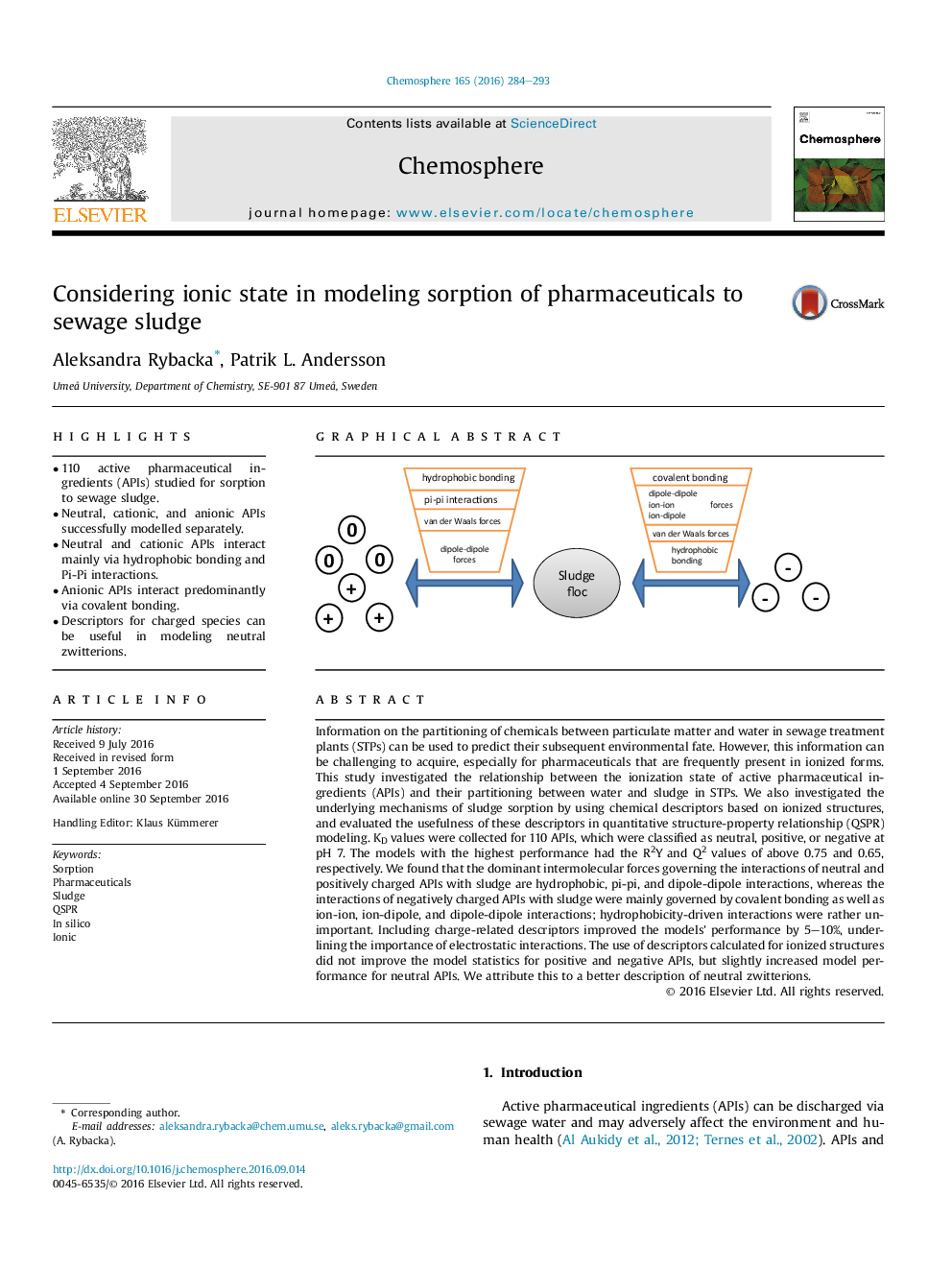| Article ID | Journal | Published Year | Pages | File Type |
|---|---|---|---|---|
| 4407297 | Chemosphere | 2016 | 10 Pages |
•110 active pharmaceutical ingredients (APIs) studied for sorption to sewage sludge.•Neutral, cationic, and anionic APIs successfully modelled separately.•Neutral and cationic APIs interact mainly via hydrophobic bonding and Pi-Pi interactions.•Anionic APIs interact predominantly via covalent bonding.•Descriptors for charged species can be useful in modeling neutral zwitterions.
Information on the partitioning of chemicals between particulate matter and water in sewage treatment plants (STPs) can be used to predict their subsequent environmental fate. However, this information can be challenging to acquire, especially for pharmaceuticals that are frequently present in ionized forms. This study investigated the relationship between the ionization state of active pharmaceutical ingredients (APIs) and their partitioning between water and sludge in STPs. We also investigated the underlying mechanisms of sludge sorption by using chemical descriptors based on ionized structures, and evaluated the usefulness of these descriptors in quantitative structure-property relationship (QSPR) modeling. KD values were collected for 110 APIs, which were classified as neutral, positive, or negative at pH 7. The models with the highest performance had the R2Y and Q2 values of above 0.75 and 0.65, respectively. We found that the dominant intermolecular forces governing the interactions of neutral and positively charged APIs with sludge are hydrophobic, pi-pi, and dipole-dipole interactions, whereas the interactions of negatively charged APIs with sludge were mainly governed by covalent bonding as well as ion-ion, ion-dipole, and dipole-dipole interactions; hydrophobicity-driven interactions were rather unimportant. Including charge-related descriptors improved the models' performance by 5–10%, underlining the importance of electrostatic interactions. The use of descriptors calculated for ionized structures did not improve the model statistics for positive and negative APIs, but slightly increased model performance for neutral APIs. We attribute this to a better description of neutral zwitterions.
Graphical abstractFigure optionsDownload full-size imageDownload as PowerPoint slide
